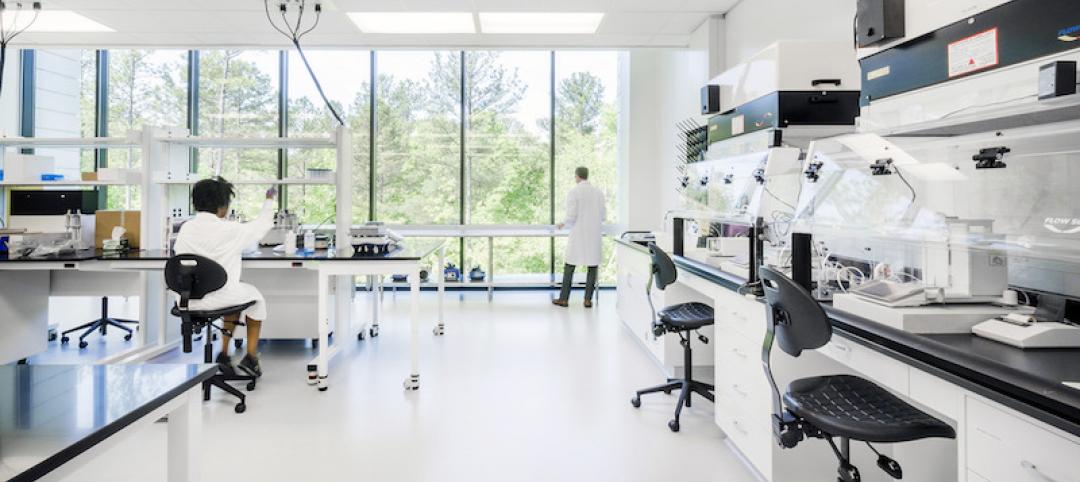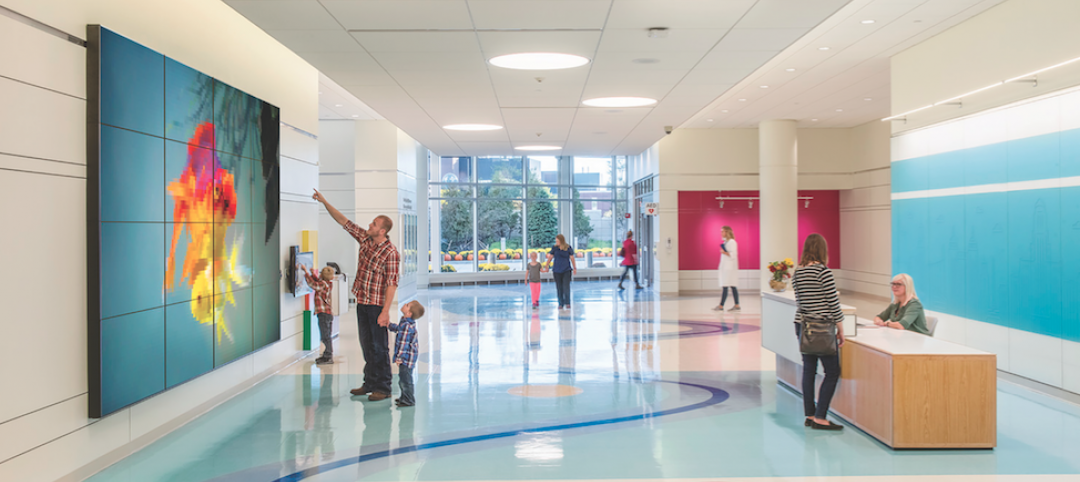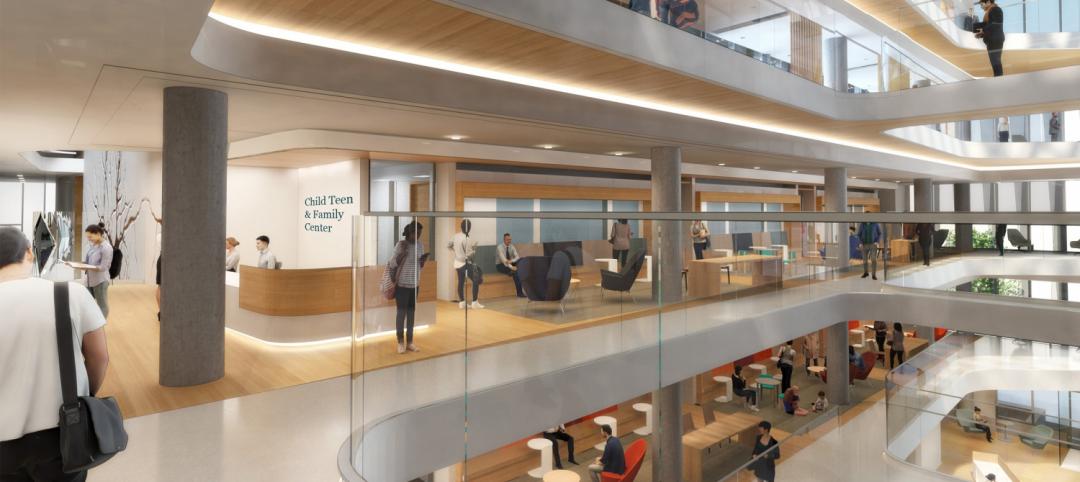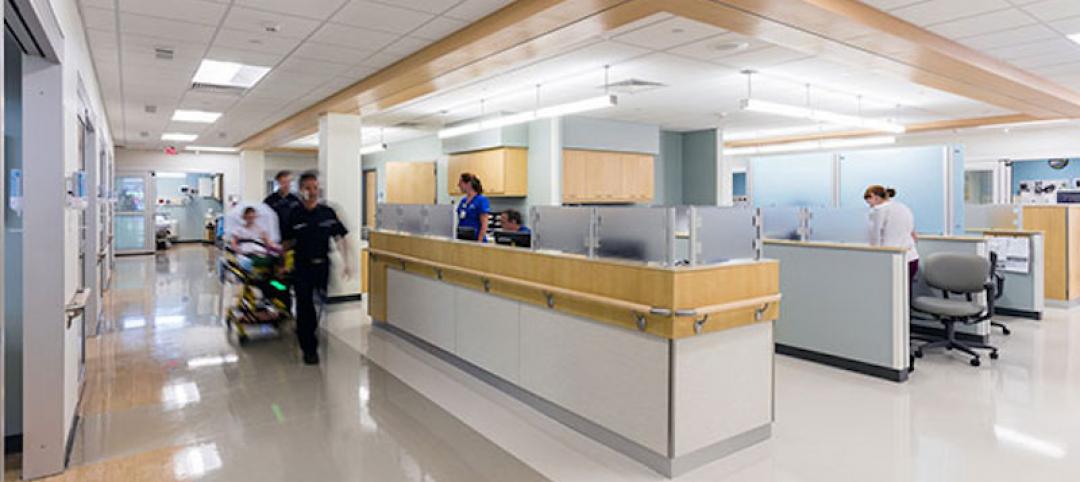When evidence-based design collides with conventional wisdom, the outcome will sometimes be disruptive.
Take, for example, the generally accepted advantages in patient care and observation related to decentralizing nurses’ stations in hospitals, which is becoming standard practice for healthcare clients and their AEC partners.
A recent evaluation of a renovated Missouri hospital, conducted by University of Kansas faculty members, raised questions about the impact of decentralization on patient satisfaction and the communication among nursing teams within the facility.
The St. Louis-based architectural firm Lawrence Group retained the Institute for Health + Wellness Design (IHWD) at KU’s School of Architecture, Design, and Planning to provide a third-party review of the firm’s 2014 remodeling of the orthopedic unit at SSM St. Mary’s Hospital in Jefferson City. That healthcare system was about to embark on an expansion of its St. Joseph Hospital West in Lake St. Louis.
Lawrence Group is an affiliate member of IHWD.
The Institute assessed the unit using an evidence-based design checklist developed by the nonprofit Center for Health Design in California. Its survey included a “space syntax” evaluation that generated a heat map, which showed how the unit’s layout might affect patient satisfaction.
“We wanted to see does moving into a new facility improve patient satisfaction scores, which is one of the most important things for hospital owners today,” said Hui Cai, Assistant Professor at KU, who with Professor Kent Spreckelmeyer and Frank Zilm, IHWD’s chairman, presented findings from the Institute’s nursing unit study at the Healthcare Design Conference 2016 in Houston last November.
The study found, perhaps not surprisingly, that the facility itself showed “statistically significant increase[s]” in scores after the renovation. But patient-quality scores mostly stayed the same, and one score—nurses’ responses to patient calls—actually dropped slightly.
The Institute hypothesizes that decentralization was the culprit, due to the physical distance and visual disconnection of decentralized nursing unit design, which necessitates that nurses must move farther to get from station to station. The Institute suggests these distances might be an impediment to interaction among nurses that might also delay responses to patients.
“This design trend needs to be further investigated before it is accepted as standard for every hospital,” said Cai. “We have to see how to modify the design to achieve balance between shorter walking distance, better patient surveillance and better staff communication and collaboration.”
This is one of the first research studies to link decentralized nurse station design with organizational performance and patient outcomes. The Institute has conducted a second phase of study to evaluate further the degree to which decentralized design affects nurses’ teamwork and patients’ perception of care. In late 2017, IHWD plans to present and publish the results of this study, which included a second hospital, the University Medical Center of Princeton at Plainsboro, N.J.
Related Stories
Engineers | Aug 22, 2018
An electrical engineer’s take on designing successful pharmaceutical lab space
Patrick Licklider, PE, CEM, GGP, LEED AP BD+C, an electrical engineer in Clark Nexsen’s Science + technology practice, shares his perspective on what it takes to successfully design laboratory and manufacturing environments for the fast-changing pharmaceutical and biotech industry.
Healthcare Facilities | Aug 3, 2018
Seismic deadlines approaching for healthcare companies
California hospitals can save money with a holistic approach to retrofit issues.
Healthcare Facilities | Jul 30, 2018
Best in healthcare design 2018: Seven projects win AIA/AAH Healthcare Design Awards
The Steven Holl-designed Maggie’s Centre Barts cancer treatment facility in London highlights the honorees of the AIA Academy of Architecture for Health 2018 Healthcare Design Awards.
Healthcare Facilities | Jul 26, 2018
Healthcare market trends 2018: Health systems get leaner, more resilient
Hospitals set their sights on improving patient convenience and operational efficiency.
Healthcare Facilities | Jul 11, 2018
5 ways design is transforming behavioral healthcare
Circadian lighting, calming materials, and transparency are helping to normalize the patient experience in behavioral healthcare.
Healthcare Facilities | Jul 10, 2018
HGA designs acute care hospital for MetroHealth in Cleveland
The facility’s master plan creates a ‘hospital in a park.’
BIM and Information Technology | Jul 9, 2018
Healthcare and the reality of artificial intelligence
Regardless of improved accuracy gains, caregivers may struggle with the idea of a computer logic qualifying decisions that have for decades relied heavily on instinct and medical intuition.
Healthcare Facilities | Jun 28, 2018
New Stanford Healthcare outpatient building opens in Redwood City
The facility recently celebrated its grand opening with a ribbon-cutting ceremony.
Healthcare Facilities | Jun 26, 2018
The future of the ambulatory surgery centers and acuity levels
Offering the one-two punch of cost savings and convenience, ASCs are increasingly becoming the venue of choice for both physicians and patients.
Healthcare Facilities | Jun 26, 2018
Mesquite, Texas to receive 60-acre ‘wellness village’
Construction is anticipated to begin on the initial phase in mid-2019.
















